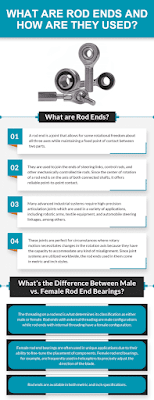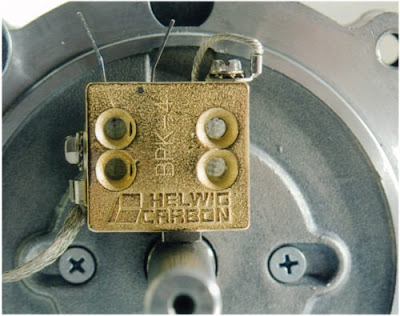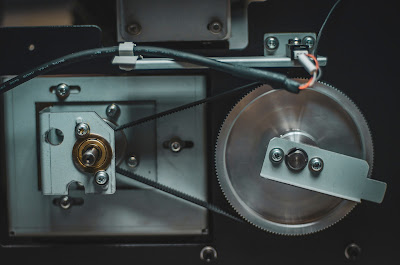What Are Rod Ends and How Are They Used?
Rod ends are among the most commonly used components in a wide range of machinery and equipment, ranging from automobiles and airplanes to industrial machinery and robotics. They are essential for providing motion and flexibility to connect two objects that can move independently. A rod end is essentially a type of joint that connects a rod and a structural member, allowing a range of movements and adjustments to accommodate the different forces and stresses that occur in various applications. Understanding what rod ends are and how they are used is critical for anyone who works with or relies on these components.
Whether you need to connect a steering column to a car wheel or control the movement of a robotic arm, rod ends enable you to make precise adjustments and movements to ensure that your equipment operates properly. With different types of rod ends available for various applications, understanding their features and specifications is crucial. This blog post provides an overview of the basics of rod ends, including their types, applications, and design considerations. Whether you are a mechanical engineer, a technician, or
1. Rod ends are mechanical components used to connect a machine's moving parts to a stationary object.
Rod ends are mechanical components used in various types of machinery to connect the moving parts of the machine to a stationary object. These components provide a joint between the machine's moving components and the stationary object that holds them. Rod ends typically feature a spherical ball with an external thread, which can be attached to the machine's moving components or the stationary object. This design allows for rotational movement, making it a highly versatile component for a range of applications. Because of their flexible nature and ability to rotate smoothly, rod ends are commonly found in a variety of industries such as aerospace, automotive, industrial machinery, and recreational vehicles.
2. They are commonly used in industrial and automotive machinery to facilitate motion and reduce friction.
Rod ends are important components used in various industrial and automotive applications. One of their primary functions is to facilitate motion and reduce friction between moving parts. Due to their unique design, rod ends allow for movement in all directions, making them ideal for use in steering systems, suspension components, and linkage mechanisms. They consist of an eye-shaped head with a threaded hole that enables attachment to a threaded rod or bolt. The other side of the device contains a spherical ball that rotates within a housing, allowing for smooth and consistent movement even under heavy loads. Known for their versatility, durability, and efficiency, rod ends have become a critical component in the manufacturing and operation of many different types of machinery.
3. Rod ends can also be used in aircraft control systems to ensure smooth operation and precision.
Rod ends are important mechanical components that are used in a wide range of applications, including aircraft control systems. These devices consist of a spherical bearing with a threaded rod attached to it, allowing for easy installation and adjustment. Rod ends are commonly used in aircraft control systems due to their ability to ensure smooth operation and precision, even under extreme conditions. By connecting different mechanical parts, rod ends enable effective transmission of forces and motion, making them a crucial component in the safe and efficient operation of aircraft. They can also be used in other applications, such as motorsports and industrial machinery, where precise movement and control are required.
4. They come in a variety of materials and sizes to accommodate different applications and loads.
Rod ends are an integral component in the design and function of many mechanical systems, particularly those requiring pivoting or rotational movement. One of the key advantages of rod ends is their versatility in different applications and loads. They are available in many different materials, including steel, stainless steel, and brass, to suit the specific needs of a given application. Additionally, rod ends come in a variety of sizes to accommodate a wide range of loads and weights. This makes them an ideal option for use in various industries, including aerospace, automotive, and construction, among others. It is important to choose the appropriate rod end based on the unique requirements of the system in order to maximize its effectiveness and longevity.
5. Proper installation, lubrication, and maintenance of rod ends is crucial for their longevity and performance.
Proper installation, lubrication, and maintenance of rod ends is crucial for their longevity and performance. Rod ends are designed to handle high loads and frequent movements, but they can still wear down and fail prematurely if they are not maintained correctly. Installation should be done by a professional who can ensure that the rod end is installed correctly and securely. Lubrication is essential to reduce friction and prevent the buildup of heat, which can cause damage or failure of the rod end. Depending on the application, the type and frequency of lubrication may vary. Maintenance should be performed regularly to inspect for signs of wear or damage and to ensure that lubrication is still effective. Taking care of your rod ends through proper installation, lubrication, and maintenance will ensure their longevity, reduce downtime, and improve overall performance.
In conclusion, rod ends are essential components in moving machinery that help to simplify motion transfer and adjust the alignment of mechanical systems. With their ability to withstand various stressors associated with heavy load-bearing and rotational force, rod ends have become fundamental to a wide range of applications in industries such as automotive, aerospace, marine, and manufacturing. The significance of rod ends cannot be overstated, and with their constant evolution, their use will remain an integral part of modern mechanical systems.




Megjegyzések
Megjegyzés küldése